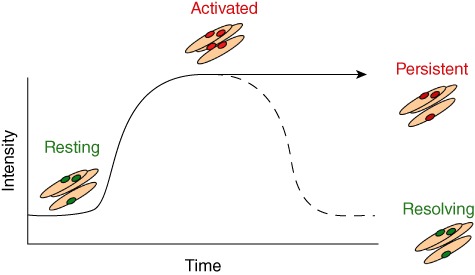Fig. 2.

Model to demonstrate the role of fibroblasts in active resolution of inflammation. As the intensity of inflammation increases over time, fibroblasts switch from a regulatory/resting to an activated phenotype. There are two potential outcomes; either the fibroblasts can switch to a resolving phenotype and reduce their cytokine/chemokine output to allow inflammation to resolve or they may retain their activated proinflammatory phenotype and prevent the resolution of inflammation. If this occurs, it is possible that even with removal of the initial stimulus the leucocyte infiltration will remain.
